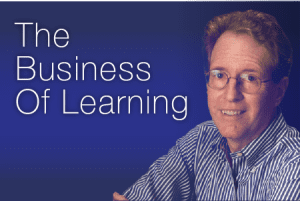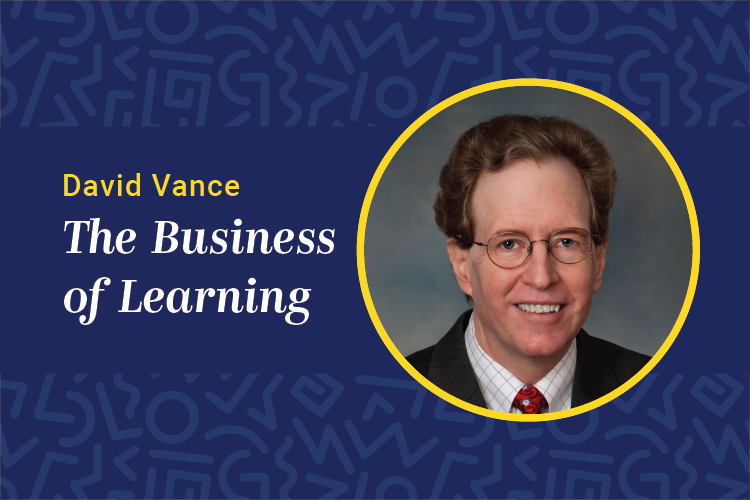 This is a good time of the year to look back and ahead. Looking back, as a profession we are blessed to have some great thought leaders who have provided a terrific foundation for the measurement and management of L&D.
This is a good time of the year to look back and ahead. Looking back, as a profession we are blessed to have some great thought leaders who have provided a terrific foundation for the measurement and management of L&D.
On the measurement side, I am thinking of Don Kirkpatrick, who gave us the four levels, and Jack Phillips, who gave us isolated impact for level 4 and ROI for level 5. I am also thinking of all the work done by the Association for Talent Development to promote measurement and to benchmark key measures through their annual industry survey.
On the management side, I am grateful again for the contributions from Don and Jack, and now Jim and Wendy Kirkpatrick and Patti Phillips as well, for their guidance in how to manage, particularly with respect to partnering closely with goal owners and focusing on what it takes to achieve level 3 application. In addition, I am particularly grateful for the work by Roy Pollock and his associates in giving us “The Six Disciplines of Breakthrough Learning,” which is a must read for anyone focusing on measurement and management of L&D.
Of course, there are many more, such as Ken Phillips and John Mattox, and I apologize to all those whom I have not mentioned. We are fortunate to have so many who have contributed to the advancement of our profession and to measurement and management of L&D in particular. And beyond L&D, the HR profession in general has benefited tremendously from thought leaders like Jac Fitz-enz, Jeff Higgins, John Boudreau and Wayne Cassio. Like Kirkpatrick and Phillips did for L&D, these thought leaders basically invented measurement for the rest of HR.
We are fortunate to have this strong foundation built throughout the past 30 to 40 years. Looking ahead, the question is where we go from here. As a profession, we now have more than 170 measures for L&D and more than 700 for HR in general. I don’t think we need more measures. We do need to better utilize some of the measures we have, especially levels 3 (application), 4 (results or impact) and 5 (ROI) for L&D. Level 3 is the starting point and should be measured for all key programs. Research by Phillips clearly indicates that CEOs want to see impact and ROI more than any other measures, which will become increasingly urgent as the next recession draws closer (pencil in 2020 or 2021 for planning purposes). While some progress has been made over the past 10 years, it is not enough, so this remains a high priority for the profession moving ahead.
Another priority for us is to do a better job managing the learning. By this I mean running learning with business discipline, which starts by partnering closely with goal owners and agreeing on specific, measurable goals or targets for the learning, assuming of course that learning indeed has a constructive role to play in achieving the business goal. And once specific plans have been made, execute those plans with the same discipline your colleagues in other departments use. This requires monthly reports comparing results to plan so that corrective action can be taken as soon as possible to get back on plan and deliver promised results. Managing learning this way is hard for many. Some simply do not want the accountability, but it is an area where the payoff in better performance and greater value delivered per dollar is huge. In fact, I would contend it has a bigger payoff than even measuring at levels 3 through 5.
Lastly, there is an opportunity to structure our departments differently to enable the better management just discussed. To develop a close partnership with goal owners (such as the head of sales) and to run learning like a business, there needs to be one L&D professional in charge of the program(s) identified to meet the business need. This one person would meet with the goal owner initially and oversee the needs analysis; get agreement with the goal owner upfront on specific measurable plans for the learning program as well as roles and responsibilities for both parties; supervise the design, development and delivery of the program; and meet regularly with the goal owner to manage the successful deployment of the learning, including reinforcement by leaders in the goal owner’s organization. This may be a challenge in some organizations, but it is indispensable for a successful partnership and for accountability within L&D.
I enjoy this great profession and the opportunity to work with all of you. We have come a long way in a relatively short period of time, and the future is bright if we continue to build on the work of those who have come before us and take the measurement, reporting and management of learning to the next level. I look forward to what we can accomplish working together.
- BUDDY PASS NOW AVAILABLE on CLO Symposium Registration, CLO Accelerator Enrollment and Membership.
- BUDDY PASS NOW AVAILABLE on CLO Symposium Registration, CLO Accelerator Enrollment and Membership.
- BUDDY PASS NOW AVAILABLE on CLO Symposium Registration, CLO Accelerator Enrollment and Membership.
- BUDDY PASS NOW AVAILABLE on CLO Symposium Registration, CLO Accelerator Enrollment and Membership.

Looking Back and Ahead on the Measurement and Management of L&D
The future is bright for L&D if we continue to build on the work of those who have come before us.














